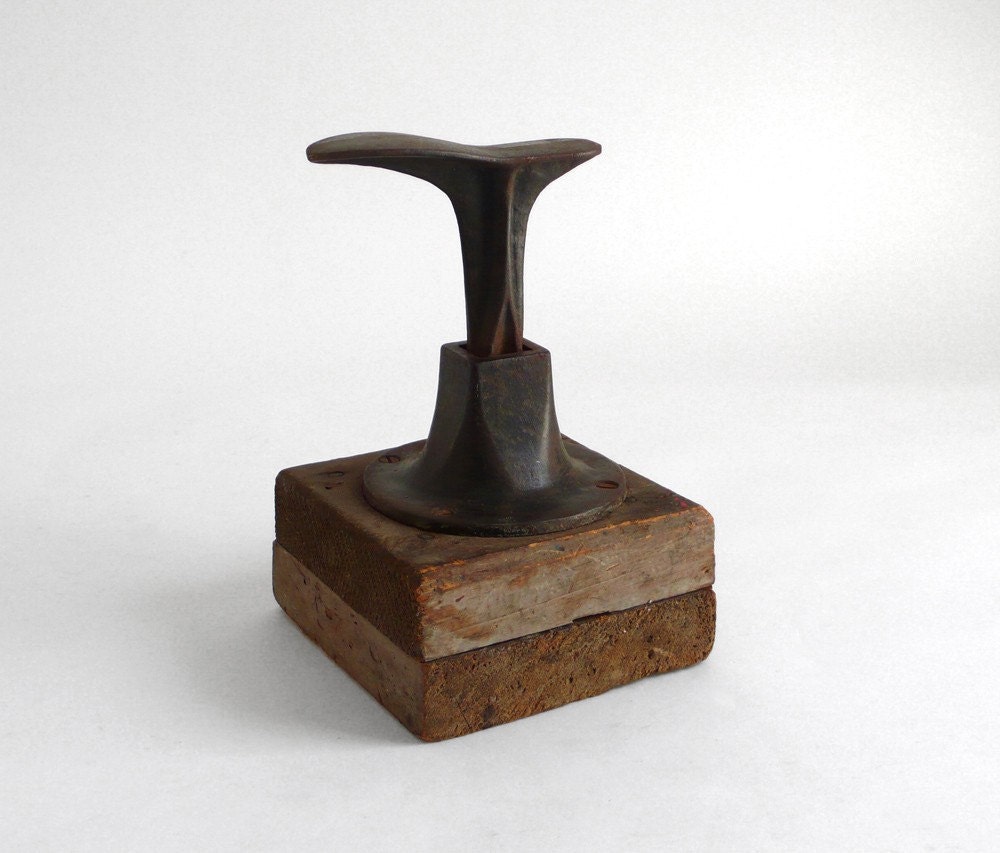Information and pictures taken from 'The Book of Trade, or, Library of the Useful Arts' by J.Johnson, published in 1807
Part II
At the time when this book was published (early 19th century) shoe-making was a fairly profitable business; some shoe-makers owned huge shops with large window displays showing off their designs to rich men and women. The shoe-maker himself would buy his leather in half-hides and skins; keeping some for his business and selling the rest on to other shops. He would always be very knowledgeable in the type of leather he was using.
 This illustration shows the master and the journeyman shoe-maker in the process of making a shoe. The master (pictured in front) is cutting out an upper leather of a shoe by cutting around a paper pattern. He has placed a weight at the corner to stop it slipping; also on his right are a pair of pincers made from teeth, used to grip the leather tight to stretch it. To his left is a hammer to beat down any rough parts standing up inside the leather. In the background is the journeyman shoe-maker. He is joining the upper leather to the sole of the shoe. Next to him on the bench are an awl (used to make holes in the leather), a knife and a stone used to sharpen his tools. On his right are a hammer and a lapstone, and on the other side is a large bucket of water. In this bucket he keeps a number of wax in balls; all these materials are necessary in his trade. The leather is sewn together with wax-coated thread and a hog's bristle instead of a needle (this guides the thread through the holes made by the awl in the leather better).
This illustration shows the master and the journeyman shoe-maker in the process of making a shoe. The master (pictured in front) is cutting out an upper leather of a shoe by cutting around a paper pattern. He has placed a weight at the corner to stop it slipping; also on his right are a pair of pincers made from teeth, used to grip the leather tight to stretch it. To his left is a hammer to beat down any rough parts standing up inside the leather. In the background is the journeyman shoe-maker. He is joining the upper leather to the sole of the shoe. Next to him on the bench are an awl (used to make holes in the leather), a knife and a stone used to sharpen his tools. On his right are a hammer and a lapstone, and on the other side is a large bucket of water. In this bucket he keeps a number of wax in balls; all these materials are necessary in his trade. The leather is sewn together with wax-coated thread and a hog's bristle instead of a needle (this guides the thread through the holes made by the awl in the leather better).Journeyman were highly skilled at making women's shoes; these required greater ingenuity due to the finer materials and smaller stitches. Women were employed to bind the shoe together and sew together those made of higher quality material such as silk or satin.
However these old fashioned-techniques of making shoes by hand were revolutionised in 1883, when an invention by Suriname-born Jan Matzeliger was patented in Lynn, Massachusetts. It was an automatic shoe-lasting machine that made it possible to make 150-700 pairs of shoes a day-14 times more than a person could! It went into production in 1885 and cut the prices of shoes in half-meaning they were now affordable to the average American.
(Information courtesy of Dean K. Anderson and Stamponhistory.com).
Pincers used in shoemaking (the far left one is 18th century, the second left is early 19th century and the other 3 are modern).

Old cobbler's tools from 1880-1910, found at Charles Roberts' Wagon Works at Horbury Bridge, Wakefield. Not sure what they're exactly for but they did repairing as shoes then were expensive to replace.

An old cobbler's tool made of cast iron with a large wood block base.
 Old cobbler's tools from 1880-1910, found at Charles Roberts' Wagon Works at Horbury Bridge, Wakefield. Not sure what they're exactly for but they did repairing as shoes then were expensive to replace.
Old cobbler's tools from 1880-1910, found at Charles Roberts' Wagon Works at Horbury Bridge, Wakefield. Not sure what they're exactly for but they did repairing as shoes then were expensive to replace.  An old cobbler's tool made of cast iron with a large wood block base.
An old cobbler's tool made of cast iron with a large wood block base. 


